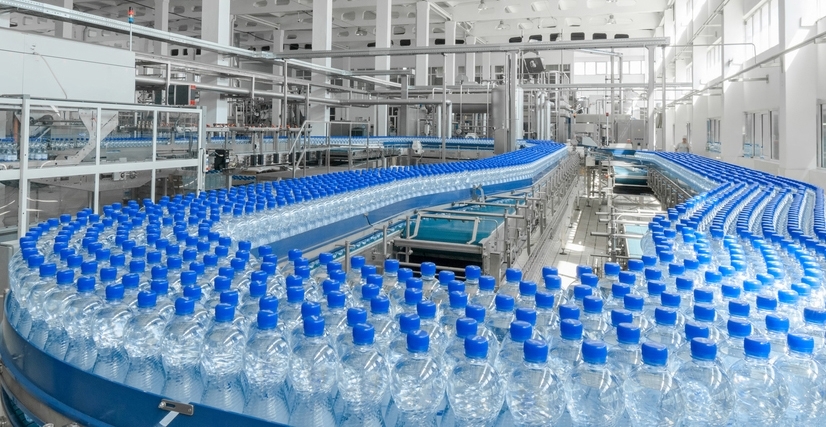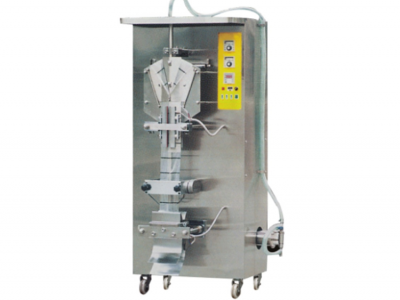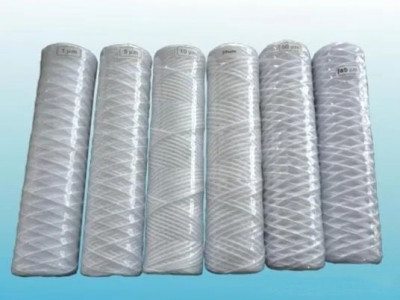Water is an essential component in the bottling industry. It is not only used as a primary ingredient in the manufacturing process of beverages but also plays a significant role in maintaining their quality and taste. However, it is crucial to ensure that the water used for bottling purposes meets certain standards. Water treatment in the bottling industry is a highly technical and scientific process that involves various methods to purify water by removing contaminants and impurities. In this article, we will explore the importance of water treatment in the bottling industry and how it ensures that consumers get safe, clean, and pure drinking water with every sip.
June 6, 2023

Overview of Water Treatment in the Bottling Industry
Water treatment plays an important role in the bottled water production process. The water bottling industry relies on a consistent supply of high-quality water to produce safe and healthy drinking water for consumers.
The drinking water manufacturing process involves several stages of treatment, including pre-treatment processes, main processes, and post-treatment processes. Each stage is designed to remove impurities from the source water and ensure that the final product meets regulatory standards.
In a typical water bottling plant, the source water is first screened to remove large debris such as leaves or rocks. Next, it undergoes pre-treatment processes such as coagulation, flocculation, sedimentation, and filtration to remove smaller particles like mud or sand.
Once the source water has been pre-treated, it enters into the main processes where it undergoes further treatment to remove dissolved solids and other contaminants. The most common methods used in this stage include reverse osmosis (RO), ultrafiltration (UF), or distillation.
After undergoing the main treatment processes, the treated water can be further disinfected with chemicals like chlorine or UV light to kill any remaining bacteria or viruses. This is known as post-treatment.
Quality assurance and control are critical components of water treatment industry for bottled water production. Quality control measures may include regular testing of both source water and finished products for chemical and microbiological contaminants. Regular maintenance of equipment also helps ensure consistent product quality.
Pre-Treatment Processes in Water Treatment for Bottling
Before water can be bottled, it must undergo a series of pre-treatment processes to remove impurities and ensure that it meets the necessary standards for drinking water. These processes are essential to maintain the quality and purity of the bottled water.
The pre-treatment process begins with screening, where large debris such as sticks, leaves, and rocks are removed from the water using screens or filters. The next step is coagulation which involves adding chemicals such as alum or ferric chloride to the water. These chemicals cause small particles to clump together and settle at the bottom of a tank creating a sludge-like substance called floc.
After coagulation, comes flocculation where paddles or other devices gently stir the water allowing floc particles to combine into larger clumps that can more easily be filtered out. Once flocculation is completed, the water moves on to sedimentation tanks where floc settles at the bottom forming sediment while clean water rises to the top.
The final pre-treatment step is filtration, where remaining small particles are removed by passing it through layers of sand and gravel or other materials like activated carbon. This removes impurities including bacteria, viruses, protozoa, algae, minerals, and any other substances that may affect taste or odor.
It is important to note that different bottling plants use different pre-treatment methods depending on their source of raw water (groundwater vs surface water) and desired end product specifications.
Main Processes in Water Treatment for Bottling
The main processes involved in water treatment for bottling plants are designed to remove impurities and contaminants from the source water. The purified water obtained from these processes is then used in the production of bottled drinking water. The most commonly used processes in water treatment for bottling include:
- Coagulation and Flocculation
Coagulation and flocculation are used to remove suspended particles from the source water. In coagulation, chemicals such as aluminum sulfate or ferric chloride are added to the water to neutralize any negatively charged particles present. This causes them to clump together into larger particles called flocs. In flocculation, the flocs formed during coagulation are agitated to increase their size, making it easier to separate them from the water.
- Sedimentation
In sedimentation, the flocs formed during coagulation and flocculation settle at the bottom of a tank due to gravity, allowing clear water to be drawn off from the top of the tank.
Filtration involves passing the settled water through different types of filters such as sand filters, activated carbon filters or membrane filters designed to remove any remaining particles or impurities.
- Disinfection
The final step in treating water for bottling is disinfection. Disinfection is necessary because even after filtration, some microorganisms may still be present in the water. Chlorine gas or sodium hypochlorite can be added to kill any remaining bacteria and viruses.
It is important to note that these processes can vary depending on the quality and characteristics of the source water being treated at each bottling plant.
Post-Treatment Processes in Water Treatment for Bottling
After the main water treatment processes, post-treatment is carried out to ensure the quality and safety of the bottled drinking water. This stage involves further purification and disinfection of the water to eliminate any remaining impurities or microorganisms.
The most common post-treatment processes in a water bottling plant include:
Ozonation is a process that uses ozone gas to disinfect the water. Ozone is an effective oxidizing agent that can kill bacteria, viruses, and other microorganisms by breaking down their cell walls. It also helps to remove any unpleasant odors or tastes from the water.
During ozonation, ozone gas is injected into the water, where it reacts with organic compounds and impurities present in the water. The resulting oxidation products are then removed through filtration or settling.
UV sterilization involves passing the purified water through a chamber where it is exposed to ultraviolet (UV) radiation. This process destroys any remaining microorganisms that may be present in the water, ensuring its safety for consumption.
UV sterilization is effective against a wide range of pathogens, including bacteria, viruses, and protozoa. It does not use chemicals or produce any harmful by-products, making it an environmentally friendly option for bottled water production process.
- Carbon Filtration
Carbon filtration is used to remove any remaining tastes or odors from the water after ozonation and UV sterilization have been performed. During this process, activated carbon filters are used to adsorb organic compounds and other impurities that can affect the taste and odor of the final product.
Carbon filtration can also help to remove any chlorine or other disinfectants that were added during earlier stages of treatment.
In conclusion, these post-treatment processes play an essential role in ensuring that bottled water is safe, pure, and free from any impurities or microorganisms. By using a combination of ozonation, UV sterilization, and carbon filtration, water bottling plants can produce high-quality drinking water that meets the stringent standards set by regulatory bodies.
Quality Assurance and Control in the Bottling Industry
In the water bottling industry, quality assurance and control are critical components of the overall process. The finished product must meet certain standards for purity, taste, and appearance, and it is up to the plant operators to ensure that these standards are met consistently.
To achieve this goal, water bottling plants employ a range of quality control measures throughout the bottled water production process. These measures begin with pre-treatment processes that remove impurities from raw water sources, such as rivers or wells. These processes may include sedimentation, filtration, chemical treatment, and other methods to remove particles and microorganisms.
Once the water has been pre-treated, it moves on to the main processes of water treatment for bottling. These typically involve further filtration steps – using techniques such as reverse osmosis or activated carbon adsorption – to remove any remaining contaminants that might affect the taste or odor of the finished product.
After these primary treatments have been completed, additional post-treatment processes may be employed to add minerals or adjust pH levels in order to achieve a specific flavor profile or improve shelf life.
Throughout all stages of water treatment for bottling, plant operators must take regular samples and perform extensive testing to ensure that their products meet strict quality control standards. This includes monitoring for microbiological contaminants such as bacteria or viruses as well as chemical impurities like pesticides or heavy metals.
Overall, quality assurance and control are essential aspects of drinking water manufacturing process. By employing rigorous quality control measures at every stage of production – from pre-treatment through post-treatment – bottling plants can ensure that their products meet high-quality standards while ensuring public health is not compromised.
Pre-treatment processes involve screening, sedimentation, filtration, and disinfection. These processes help to remove larger particles, organic matter, and microorganisms that can affect the quality of water.
Main processes such as reverse osmosis, ion exchange, and carbon filtration work to remove dissolved solids, minerals, and other impurities that are not removed during pre-treatment.
Post-treatment processes include remineralization and pH adjustment. These final steps ensure that the water has a balanced pH level and contains essential minerals for taste.
Quality assurance and control are also crucial in ensuring high-quality bottled water. Regular testing of water samples helps to detect any potential issues early on before they become a problem.
Overall, the bottling industry takes water treatment seriously to ensure that their products are safe for consumption by their customers. The use of advanced technology and strict quality control measures helps them achieve this goal consistently.
Detailed Operating Instructions for Automatic Dosing Systems
December 26, 2024
Characteristics and Applications of Precision Filters
December 19, 2024



